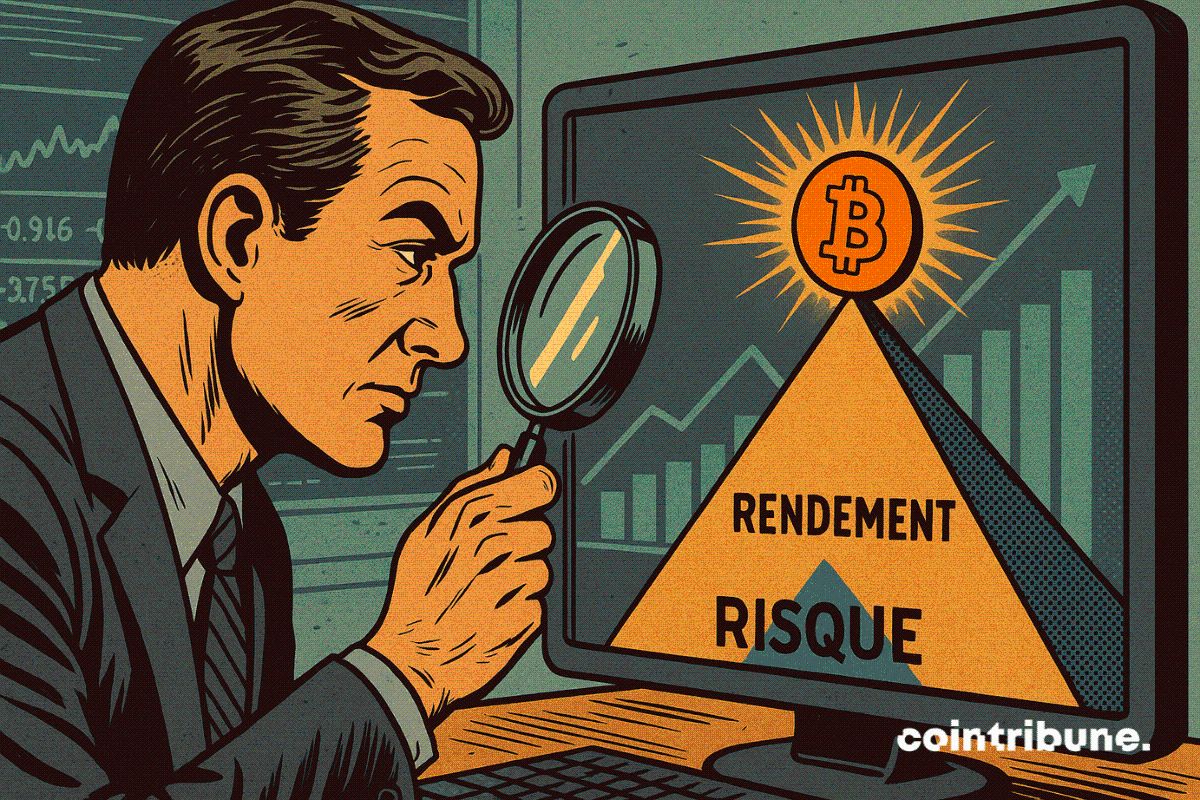Decoding FETH: How Behavioral Economics Shapes Risk Perception and Investment Strategy in the Ethereum ETP Market
- Fidelity's Ethereum ETP (FETH) leverages behavioral economics, particularly the reflection effect, to influence investor decisions and market dynamics. - The ETP's volatility reflects risk-averse selling during losses and risk-seeking buying during gains, creating self-reinforcing price cycles. - Fidelity's regulatory alignment and institutional-grade infrastructure reduce perceived risks, attracting both risk-averse and risk-seeking investors. - Investors are advised to counter-cyclical strategies, buyi
In the volatile world of digital assets, the Fidelity Ethereum ETP (FETH) has emerged as a critical bridge between traditional finance and blockchain innovation. Yet, its performance and strategic positioning are not solely dictated by market fundamentals or regulatory shifts. Instead, they are deeply influenced by behavioral economics principles—particularly the reflection effect, which describes how individuals reverse their risk preferences when outcomes are framed as losses versus gains. For investors and corporate strategists, understanding this dynamic offers a lens to anticipate market behavior, identify undervalued assets, and navigate the psychological pitfalls of uncertainty.
The Reflection Effect and FETH's Volatility
The reflection effect, first articulated by Daniel Kahneman and Amos Tversky, posits that people tend to be risk-averse when facing gains but risk-seeking when facing losses. This principle is vividly on display in FETH's price action. For instance, during Ethereum's 10.8% price correction in late July 2025, FETH experienced $156 million in outflows as investors, fearing further losses, sold shares to mitigate downside risk. Conversely, when Ethereum rebounded in May 2025 (+44.2% for FETH), many investors adopted a risk-averse stance, locking in gains and reducing exposure to the ETP.
This behavioral duality creates a self-reinforcing cycle: panic-driven selling during downturns and euphoria-fueled buying during rallies. For FETH, this means its liquidity and price volatility are not just technical metrics but psychological barometers. A reveals a strong correlation, but also moments where FETH's price diverges due to investor sentiment. For example, in February 2025, FETH's -33.3% monthly return outpaced Ethereum's decline, reflecting heightened risk aversion.
Corporate Strategy: Fidelity's Behavioral Leverage
Fidelity's design of FETH as a spot ETP—traded on traditional exchanges and custodied by institutional-grade infrastructure—directly addresses the reflection effect. By eliminating the need for crypto wallets or exchange accounts, FETH reduces the cognitive load and perceived risk for investors who might otherwise avoid Ethereum's complexities. This structural simplicity appeals to risk-averse investors during gains (e.g., those seeking to “hodl” Ethereum without custody risks) and risk-seeking investors during losses (e.g., those chasing discounted exposure to a growing asset class).
Moreover, Fidelity's emphasis on regulatory alignment (e.g., leveraging the U.S. Genius Act and EU MiCA) taps into another behavioral bias: the authority bias. Investors often perceive products endorsed by regulators as safer, even if the underlying asset (Ethereum) remains volatile. This perception has helped FETH attract institutional capital, with platforms like Elevated Returns and Mata Capital using it as a liquidity backbone for tokenized real estate. A underscores how Fidelity's brand and regulatory positioning have mitigated behavioral hesitancy.
Investor Decision-Making: From Fear to Opportunity
For individual investors, the reflection effect offers a framework to counteract emotional decision-making. Consider the following scenario:
- During market fear (e.g., when the Crypto Fear & Greed Index drops to 44), investors may overreact to short-term losses, selling FETH at a discount. However, this is often a buying opportunity for those who recognize that Ethereum's long-term fundamentals (e.g., real estate tokenization adoption) remain intact.
- During market greed (e.g., when FETH's beta of 1.32 amplifies gains), investors may overpay for the ETP, assuming the trend will continue. Here, the reflection effect warns against complacency—locking in profits or hedging with inverse products could mitigate future downside.
A from Q1 to Q2 2025 illustrates this pattern. In March 2025, as Ethereum fell 15%, FETH saw $300 million in inflows, driven by risk-seeking investors. By April 2025, as Ethereum rebounded 20%, FETH's inflows reversed, with $250 million in outflows. This “buy the dip, sell the rally” behavior aligns with the reflection effect and highlights how sentiment-driven flows can create mispricings.
Strategic Moves by Politically Connected Firms
The reflection effect also explains how politically connected firms might exploit behavioral biases. For example, Fidelity's alignment with regulatory frameworks (e.g., MiCA) not only legitimizes FETH but also signals to investors that the product is “safer” than unregulated alternatives. This creates a perceived asymmetry in risk, where investors are more willing to take on Ethereum's volatility because the ETP is framed as a regulated, institutional-grade product.
Similarly, firms with political influence could use the reflection effect to time market entry. During periods of fear, they might launch aggressive marketing campaigns to position FETH as a “safe haven” for Ethereum exposure. During periods of greed, they might emphasize FETH's liquidity and low expense ratio (0.25%) to attract capital. A could reveal such strategic timing.
Investment Advice: Balancing Emotion and Logic
For investors, the key takeaway is to anticipate behavioral extremes and act counter-cyclically. Here's how:
1. Buy During Fear: When the Crypto Fear & Greed Index drops below 40, consider allocating to FETH if Ethereum's fundamentals (e.g., tokenized real estate growth) suggest a rebound.
2. Sell During Greed: When the index exceeds 80, lock in gains or reduce exposure to avoid overpaying for the ETP.
3. Diversify Risk Preferences: Use FETH in conjunction with inverse or leveraged products to hedge against the reflection effect's volatility.
4. Monitor Regulatory Shifts: Politically connected firms may use regulatory changes to influence sentiment—track announcements around MiCA or Genius Act updates.
Conclusion: The Future of FETH in a Behavioral Framework
FETH's success hinges not just on Ethereum's price but on how investors and corporations navigate the reflection effect. By understanding the psychological drivers of risk aversion and risk-seeking behavior, investors can identify undervalued opportunities and avoid costly mistakes. For Fidelity, the ETP is a masterclass in leveraging behavioral economics to bridge traditional and digital finance—a strategy that will only grow in relevance as tokenization reshapes asset markets.
In the end, FETH is more than an ETP; it's a case study in how behavioral economics can turn uncertainty into an advantage.
Disclaimer: The content of this article solely reflects the author's opinion and does not represent the platform in any capacity. This article is not intended to serve as a reference for making investment decisions.
You may also like
Charlie Munger's Final Years: Bold Investments at 99, Supporting Young Neighbors to Build a Real Estate Empire
A few days before his death, Munger asked his family to leave the hospital room so he could make one last call to Buffett. The two legendary partners then bid their final farewell.

Stacks Nakamoto Upgrade
STX has never missed out on market speculation surrounding the BTC ecosystem, but previous hype was more like "castles in the air" without a solid foundation. After the Nakamoto upgrade, Stacks will provide the market with higher expectations through improved performance and sBTC.

Do Kwon Wants Lighter Sentence After Admitting Guilt

Bitwise Expert Sees Best Risk-Reward Since COVID
